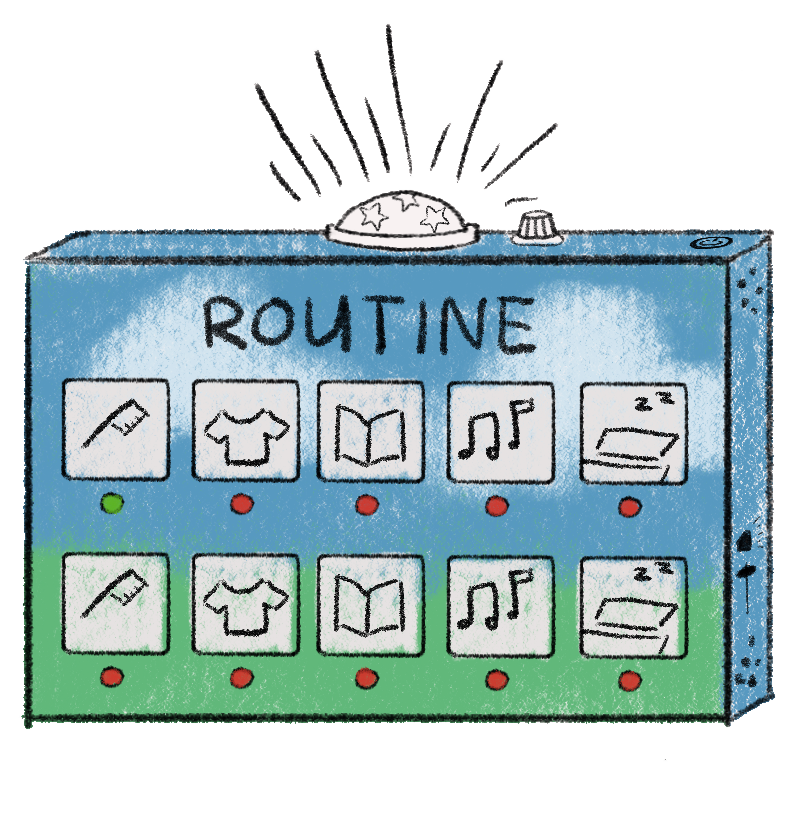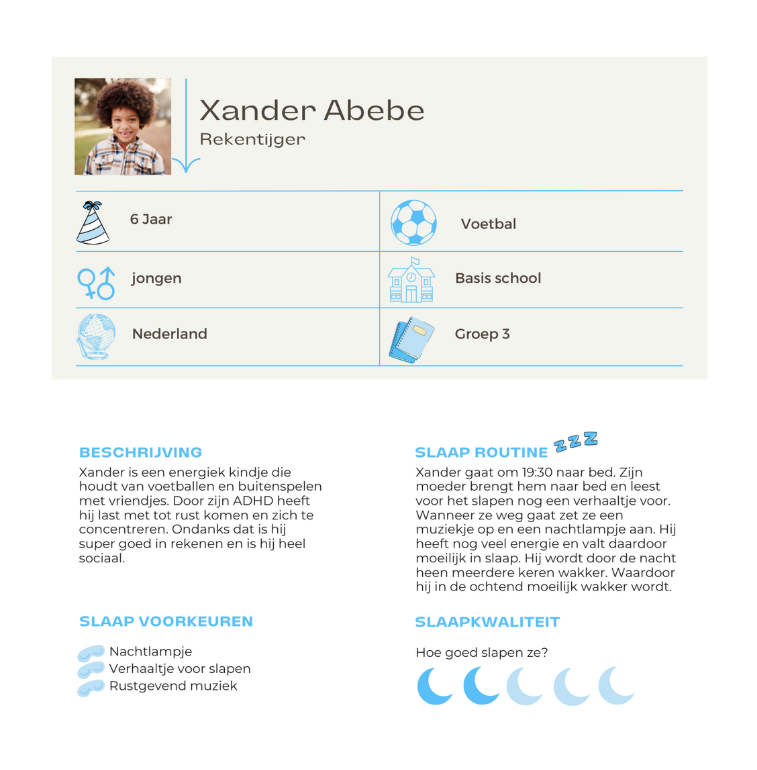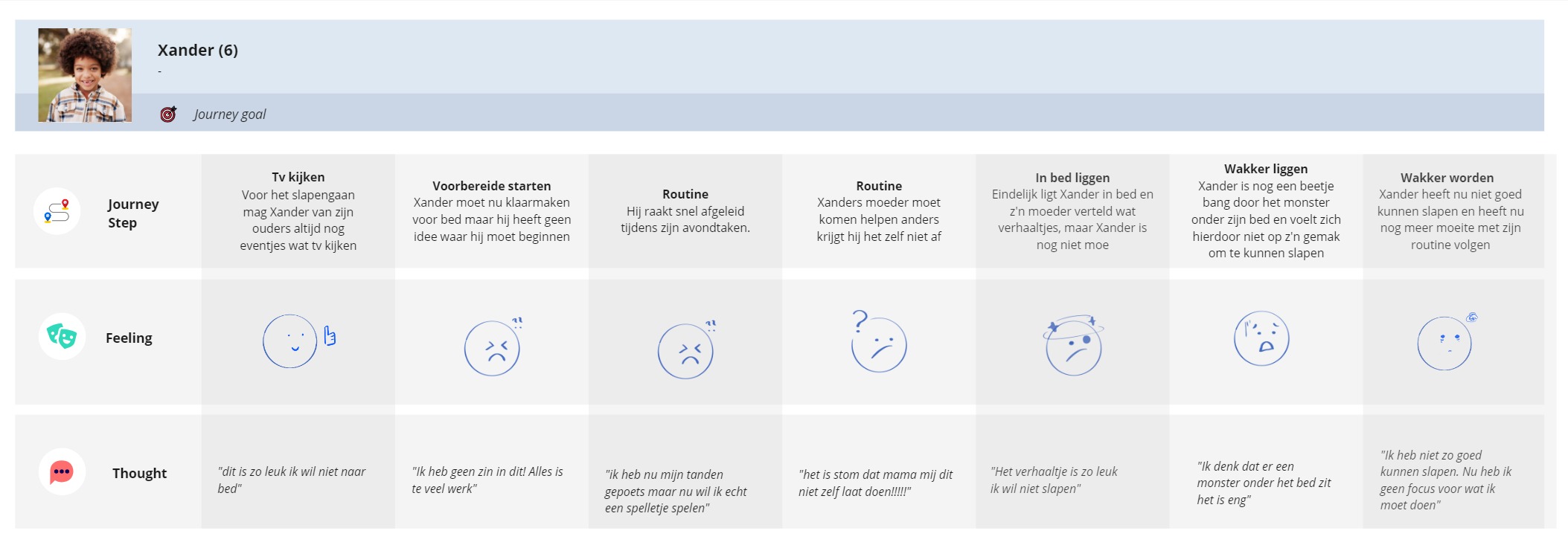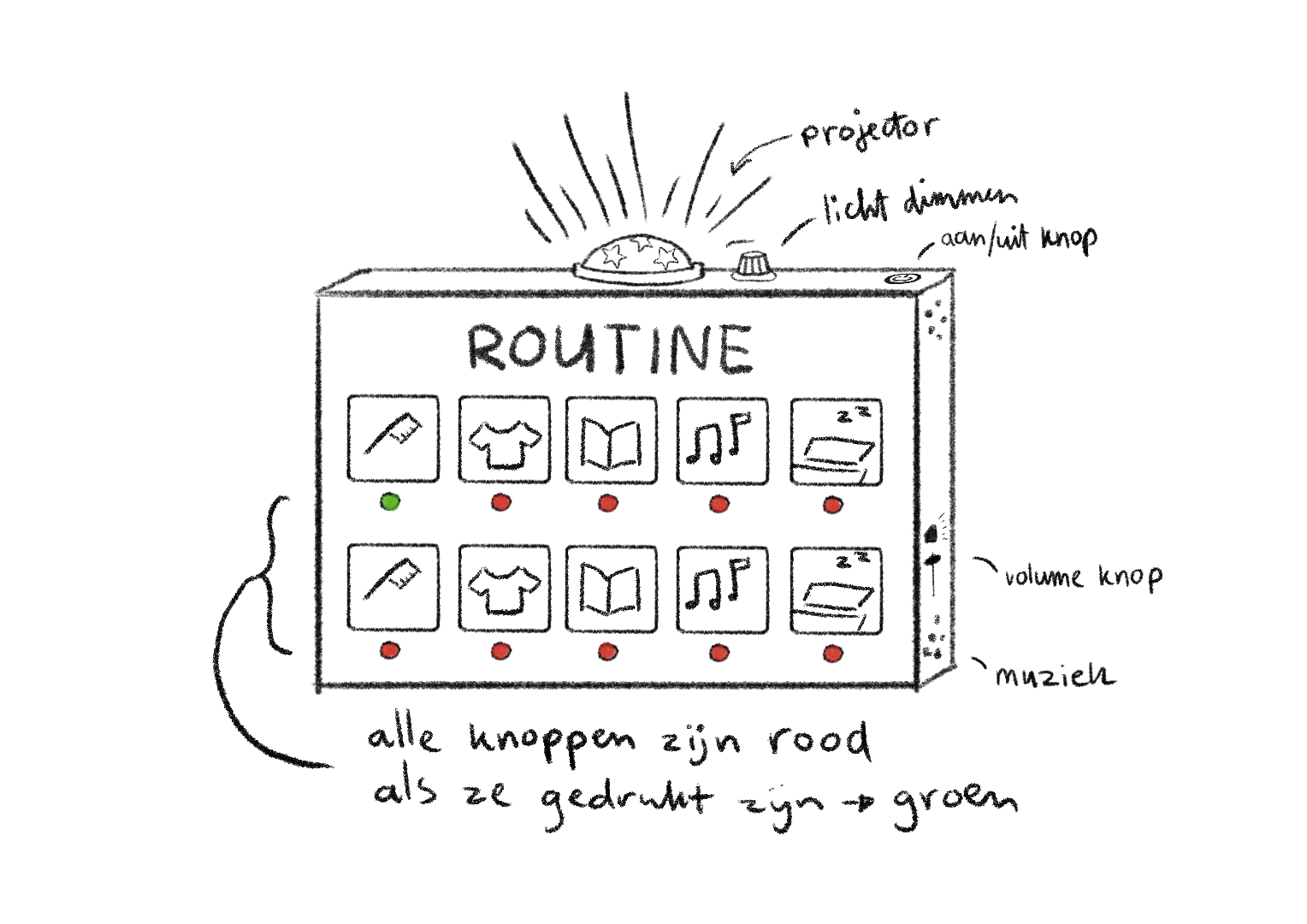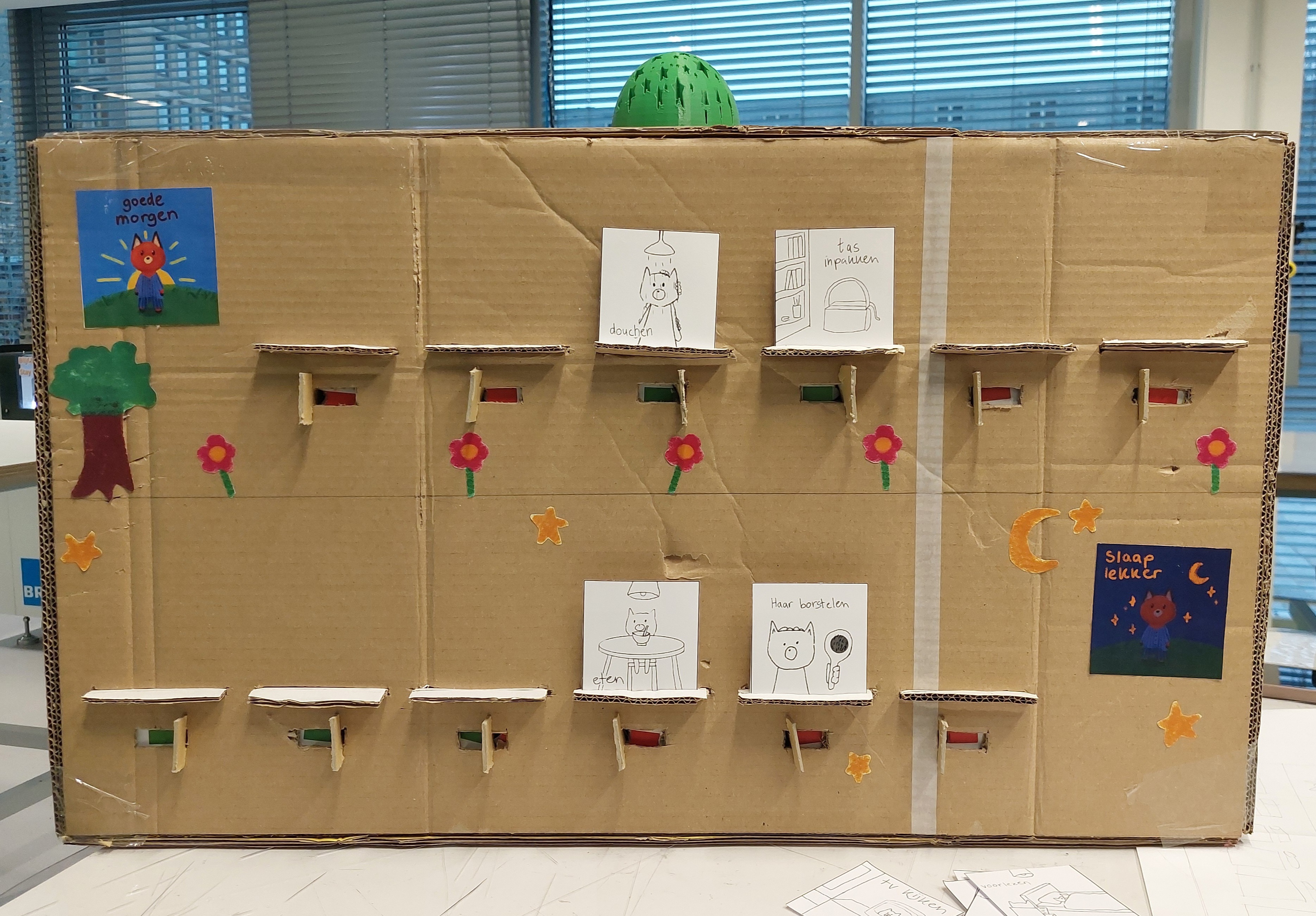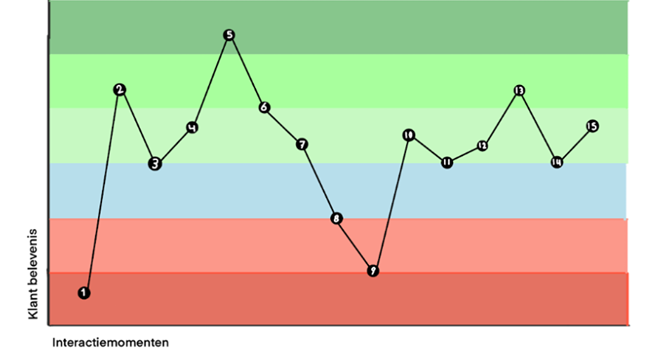children
- User wants the product to be easy to use (M)
- User wants the product to have a nice appearance so that it appeals to them (S)
- User wants to feel safe and not overstimulated (M)
- User wants a tool that helps to let go of worrying thoughts (C)
- User wants to have an overview of the time (S)
- User wants to see at which step it is in the routine (M)
